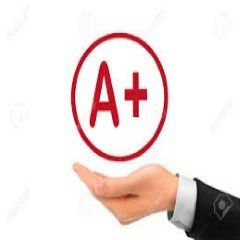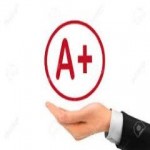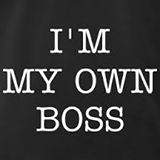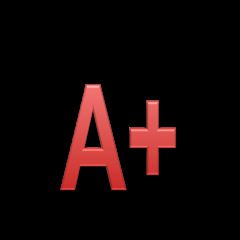ACCT2101 Exam 3 Study Guide Chapters 7 – 9 complete solutions correct answers key
ACCT 2101 Exam 3 Study Guide (Chapters 7 – 9) complete solutions correct answers key
Chapter 7
1. Schwinn Company assembled the following information in completing its March bank reconciliation:
Balance per bank $15,280
Outstanding checks $3,100
Deposits in transit $5,000
NSF check $320
Bank service charge $100
Cash balance per books $17,600
As a result of this reconciliation, Schwinn will
a. reduce its cash account by $1,900.
b. reduce its cash account by $100.
c. increase its cash account by $220.
d. reduce its cash account by $420. (NSF & Bank Charge)
2. The following information was taken from Mitchell Company cash budget for the month of July:
Beginning cash balance $100,000
Cash receipts 96,000
Cash disbursements 136,000
If the company has a policy of maintaining end of the month cash balance of $100,000, the amount the company would have to borrow is
a. $40,000. (100000+96000-136000=60000; 100000-60000=40000)
b. $20,000.
c. $60,000.
d. $24,000.
3. The following credit sales are budgeted by Garcia Company:
January $255,000
February 375,000
March 525,000
April 450,000
The company’s past experience indicates that 70% of the accounts receivable are collected in the month of sale, 20% in the month following the sale, and 8% in the second month following the sale. The anticipated cash inflow for the month of March is
a. $462,900. (525000March*70%=367500; 375000Feb*20%=75000; 255000Jan*8%=20400; 367500+75000+20400=462900)
b. $420,000.
c. $450,000.
d. $441,000.
4. Higgins Company gathered the following reconciling information in preparing its October bank reconciliation:
Cash balance per books, 10/31 $12,600
Deposits in transit 450
Notes receivable and interest collected by bank 2,550
Bank charge for check printing 60
Outstanding checks 6,000
NSF check 510
The adjusted cash balance per books on October 31 is
a. $14,130.
b. $12,030.
c. $8,580.
d. $14,580. (12600+2550-60-510)
5. All of the following are examples of internal control procedures except
a. using prenumbered documents.
b. reconciling the bank statement.
c. customer satisfaction surveys.
d. insistence that employees take vacations.
6. Internal control is defined, in part, as a plan that safeguards
a. all balance sheet accounts.
b. assets.
c. liabilities.
d. capital stock.
7. Having one person responsible for the related activities of ordering merchandise, receiving goods, and paying for them
a. increases the potential for errors and fraud.
b. decreases the potential for errors and fraud.
c. is an example of good internal control.
d. is a good example of safeguarding the company's assets.
8. When two or more people get together for the purpose of circumventing prescribed controls, it is called
a. a fraud committee.
b. collusion.
c. a division of duties.
d. bonding of employees.
9. The control principle related to not having the same person authorize and pay for goods is known as
a. establishment of responsibility.
b. independent internal verification.
c. separation of duties.
d. rotation of duties.
10. Physical controls to safeguard assets do not include
a. cashier department supervisors.
b. vaults.
c. safety deposit boxes.
d. locked warehouses.
11. A deposit made by a company will appear on the bank statement as a
a. debit.
b. credit.
c. debit memorandum.
d. credit memorandum.
12. A bank reconciliation should be prepared
a. whenever the bank refuses to lend the company money.
b. when an employee is suspected of fraud.
c. to explain any difference between the depositor's balance per books with the balance per bank.
d. by the person who is authorized to sign checks.
13. Deposits in transit
a. have been recorded on the company's books but not yet by the bank.
b. have been recorded by the bank but not yet by the company.
c. have not been recorded by the bank or the company.
d. are customers’ checks that have not yet been received by the company.
14. If a check correctly written and paid by the bank for $626 is incorrectly recorded on the company's books for $662, the appropriate treatment on the bank reconciliation would be to
a. add $36 to the book's balance.
b. subtract $36 from the book's balance.
c. deduct $36 from the bank's balance.
d. deduct $626 from the book's balance.
15. Which of the following bank reconciliation items would not result in an adjusting entry?
a. Service charge.
b. Deposits in transit.
c. NSF check of customer.
d. Collection of a note by the bank.
16. James Company had checks outstanding totaling $16,200 on its June bank reconciliation. In July, James Company issued checks totaling $116,700. The July bank statement shows that $78,900 in checks cleared the bank in July. A check from one of James Company's customers in the amount of $900 was also returned marked "NSF." The amount of outstanding checks on James Company's July bank reconciliation should be
a. $37,800.
b. $54,000. (16200 + 116700 – 78900)
c. $53,100.
d. $21,600.
17. Nilson Company gathered the following reconciling information in preparing its August bank reconciliation:
Cash balance per books, 8/31 $7,000
Deposits in transit 300
Notes receivable and interest collected by bank 1,700
Bank charge for check printing 40
Outstanding checks 4,000
NSF check 340
The adjusted cash balance per books on August 31 is
a. $8,320. (7000 +1700 – 40 – 340)
b. $8,020.
c. $4,620.
d. $4,920.
18. At April 30, Kessler Company has the following bank information:
Cash balance per bank $6,900
Outstanding checks $420
Deposits in transit $825
Credit memo for interest $15
Bank service charge $30
What is Kessler’s adjusted cash balance on April 30?
a. $7,290.
b. $7,320.
c. $6,495.
d. $7,305. (6900 + 420 + 15 – 30)
19. A $100 petty cash fund has cash of $15 and receipts of $80. The journal entry to replenish the account would include a credit to
a. Cash for $85. (100 – 15)
b. Petty Cash for $85.
c. Cash Over and Short for $5.
d. Cash for $80.
20. A $200 petty cash fund has cash of $32 and receipts of $172. The journal entry to replenish the account would include
a. debit to Cash for $172.
b. credit to Petty Cash for $172.
c. credit to Cash over and Short for $4. (200 – 32 = 168; 168 – 172 = -4)
d. credit to Cash for $172.
Chapter 8
21. The receivable that is usually evidenced by a formal instrument of credit is a(n)
a. trade receivable.
b. note receivable.
c. accounts receivable.
d. income tax receivable.
22. Dorman Company had the following items to report on its balance sheet:
Employee advances
$ 1,580
Amounts owed by customers for the sale of services (due in 30 days
3,050
Refundable income taxes
1,120
Interest receivable
950
Accepted a formal instrument of credit for services (due in 18 months)
2,220
A loan to company president
5,000
Dishonored a note for principal and interest which will eventually be collected
1,380
Based on this information, what amount should appear in the "Other Receivables" category?
a. $15,300
b. $ 8,650 (1580 +1120 + 950 + 5000)
c. $10,030
d. $12,250
23. The account Allowance for Doubtful Accounts is classified as a(n)
a. liability.
b. contra account of Bad Debt Expense.
c. expense.
d. contra account to Accounts Receivable.
24. Under the allowance method, Bad Debt Expense is recorded
a. when an individual account is written off.
b. when the loss amount is known.
c. for an amount that the company estimates it will not collect.
d. several times during the accounting period.
25. When an account becomes uncollectible and must be written off
a. Allowance for Doubtful Accounts should be credited.
b. Accounts Receivable should be credited.
c. Bad Debts Expense should be credited.
d. Sales should be debited.
26. An aging of a company's accounts receivable indicates that $4,000 are estimated to be uncollectible. If Allowance for Doubtful Accounts has a $1,200 credit balance, the adjustment to record bad debts for the period will require a
a. debit to Bad Debts Expense for $4,000.
b. debit to Allowance for Doubtful Accounts for $2,800.
c. debit to Bad Debts Expense for $2,800. (4000 – 1200)
d. credit to Allowance for Doubtful Accounts for $4,000.
27. Two methods of accounting for uncollectible accounts are the
a. allowance method and the accrual method.
b. allowance method and the net realizable method.
c. direct write-off method and the accrual method.
d. direct write-off method and the allowance method.
28. To record estimated uncollectible accounts using the allowance method, the adjusting entry would be a
a. debit to Accounts Receivable and a credit to Allowance for Doubtful Accounts.
b. debit to Bad Debts Expense and a credit to Allowance for Doubtful Accounts.
c. debit to Allowance for Doubtful Accounts and a credit to Accounts Receivable.
d. debit to Loss on Credit Sales and a credit to Accounts Receivable.
29. You have just received notice that a customer of yours with an account receivable balance of $100 has gone bankrupt and will not make any future payments. Assuming you use the allowance method, the entry you make is to
a. debit Allowance for Doubtful Accounts and credit Bad Debt Expense.
b. debit Allowance for Doubtful Accounts and credit Accounts Receivable.
c. debit Bad Debt Expense and credit Allowance for Doubtful Accounts.
d. debit Bad Debt Expense and credit Accounts Receivable.
30. Nichols Company uses the percentage of receivables method for recording bad debts expense. The accounts receivable balance is $200,000 and credit sales are $1,000,000. Management estimates that 5% of accounts receivable will be uncollectible. What adjusting entry will Nichols Company make if the Allowance for Doubtful Accounts has a credit balance of $2,000 before adjustment?
a. Bad Debts Expense 10,000
Allowance for Doubtful Accounts 10,000
b. Bad Debts Expense 8,000
Allowance for Doubtful Accounts 8,000
c. Bad Debts Expense 8,000
Accounts Receivable 8,000
d. Bad Debts Expense 10,000
Accounts Receivable 10,000
31. An analysis and aging of the accounts receivable of Watts Company at December 31 reveal these data:
Accounts receivable $ 3,200,000
Allowance for doubtful accounts per books before adjustment (credit) 200,000
Amounts expected to become uncollectible 260,000
What is the cash realizable value of the accounts receivable at December 31 after adjustment?
a. $2,740,000
b. $3,000,000
c. $3,200,000
d. $2,940,000 (3200000 – 260000)
32. Smithson Corporation’s unadjusted trial balance includes the following balances (assume normal balances):
· Accounts Receivable $2,238,000
· Allowances for Doubtful Accounts $ 42,600
Bad debts are estimated to be 6% of outstanding receivables. What amount of bad debts expense will the company record?
a. $134,280
b. $ 91,680 (2238000 * .06 = 134280; 134280 – 42600)
c. $ 89,124
d. $136,836
33. The two key parties to a promissory note are the
a. maker and a bank.
b. debtor and the payee.
c. maker and the payee.
d. sender and the receiver.
34. The interest on a $8,000, 6%, 60-day note receivable is
a. $480.
b. $80. (8000 * .06 * (60/360))
c. $160.
d. $240.
35. The interest on a $4,000, 10%, 1-year note receivable is
a. $4,000.
b. $400. (4000 * .10 * 1)
c. $4,400.
d. $4,040.
36. Rosen Company receives a $3,000, 3-month, 6% promissory note from Bay Company in settlement of an open accounts receivable. What entry will Rosen Company make upon receiving the note?
a. Notes Receivable 3,045
Accounts Receivable—Bay Company 3,045
b. Notes Receivable 3,045
Accounts Receivable—Bay Company 3,000
Interest Revenue 45
c. Notes Receivable 3,000
Interest Receivable 45
Accounts Receivable—Bay Company 3,000
Interest Revenue 45
d. Notes Receivable 3,000
Accounts Receivable—Bay Company 3,000
37.The interest rate for a three-month loan would normally be stated in terms of which of the following rates of interest?
a. Daily
b. Monthly
c. Quarterly
d. Annual
38.Young Company lends Dobson industries $30,000 on August 1, 2012, accepting a
9-month, 12% interest note. If Young accrued interest at its December 31, 2012 year-end, what entry must it make to record the collection of the note and interest at its maturity date?
a. Cash 32,700
Notes Receivable 30,000
Interest Revenue 2,700
b. Cash 32,700
Notes Receivable 32,700
c. Notes Receivable 30,000
Interest Receivable 1,500
Interest Revenue 1,200
Cash 32,700
d. Cash 32,700
Notes Receivable 30,000
Interest Receivable 1,500 (30000 * .12 * (5/12))
Interest Revenue 1,200 (30000 * .12 * (4/12))
39. The maturity value of a $30,000, 9%, 40-day note receivable dated July 3 is
a. $30,000.
b. $33,000.
c. $32,700.
d. $30,300. (30000 * .09 * (40/360))
40. On April 5 Donna’s Boutique accepted a Visa card for a $500 purchase. Visa charges a 2% service fee. The entry to record this transaction would include a
a. credit to Cash of $490.
b. debit to Cash of $500.
c. debit to Service Charge Expense of $10. (500 * .02)
d. credit to Service Charge Expense of $10.
41. Schofield Retailers accepted $50,000 of Silver Bank MasterCard credit card charges for merchandise sold on August 1. Silver Bank charges 4% for its credit card use. The entry to record this transaction by Schofield Retailers will include a credit to Sales of $50,000 and a debit(s) to
a. Cash for $48,000 and Service Charge Expense for $2,000. (50000 * .04)
b. Accounts receivable for $48,000 and Service Charge Expense for $2,000.
c. Cash for $50,000.
d. Accounts Receivable for $50,000.
Chapter 9
42. A company purchased land for $210,000 cash. Real estate brokers' commission was $15,000 and $21,000 was spent for demolishing an old building on the land before construction of a new building could start. Under the cost principle, the cost of land would be recorded at
a. $231,000.
b. $210,000.
c. $225,000.
d. $246,000. (210000 + 15000 + 21000)
43. A company purchased land for $72,000 cash. Real estate brokers' commission was $5,000 and $7,000 was spent for demolishing an old building on the land before construction of a new building could start. Proceeds from salvage of the demolished building was $1,200. Under the cost principle, the cost of land would be recorded at
a. $82,800. (72000 + 5000 + 7000 - 1200)
b. $72,000.
c. $77,800.
d. $84,000.
44. Which of the following is not properly classified as property, plant, and equipment?
a. Building used as a factory.
b. Land used in ordinary business operations.
c. A truck held for resale by an automobile dealership.
d. Land improvement, such as parking lots and fences.
45. Which one of the following items is not considered a part of the cost of a truck purchased for business use?
a. Sales tax.
b. Truck license.
c. Freight charges.
d. Cost of lettering on side of truck.
46. Shaffer Company acquires land for $56,000 cash. Additional costs are as follows.
Removal of shed $ 300
Filling and grading 1,500
Salvage value of lumber of shed 120
Broker commission 1,130
Paving of parking lot 10,000
Closing costs 560
Shaffer will record the acquisition cost of the land as
a. $56,000.
b. $57,690.
c. $59,610.
d. $59,370. (56000 + 300 + 1500 – 120 + 1130 + 560)
47. All leases are classified as either
a. capital leases or long-term leases.
b. capital leases or operating leases.
c. operating leases or current leases,
d. long-term leases or current leases.
48. The term applied to the periodic expiration of a plant asset’s cost is
a. amortization.
b. depletion.
c. depreciation.
d. cost expiration.
49. Equipment was purchased for $60,000. Freight charges amounted to $2,800 and there was a cost of $8,000 for building a foundation and installing the equipment. It is estimated that the equipment will have a $12,000 salvage value at the end of its 5-year useful life. Depreciation expense each year using the straight-line method will be
a. $14,160.
b. $11,760. (60000 + 2800 + 8000 – 12000 = 58800; 58800 / 5 = 11760)
c. $9,840.
d. $9,600.
50. A company purchased factory equipment on April 1, 2012, for $72,000. It is estimated that the equipment will have a $9,000 salvage value at the end of its 10-year useful life. Using the straight-line method of depreciation, the amount to be recorded as depreciation expense at December 31, 2012, is
a. $7,200.
b. $6,300.
c. $4,725. (72000 – 9000 = 63000; 63000 / 10 = 6300; 6300 * (9/12) = 4725
d. $5,400.
51. Which of the following methods will result in the highest depreciation in the first year?
a. Sum-of-year’s-digits.
b. Time valuation.
c. Straight-line.
d. Declining-balance.
52. Jack's Copy Shop bought equipment for $90,000 on January 1, 2011. Jack estimated the useful life to be 3 years with no salvage value, and the straight-line method of depreciation will be used. On January 1, 2012, Jack decides that the business will use the equipment for a total of 5 years. What is the revised depreciation expense for 2012?
a. $30,000.
b. $12,000.
c. $15,000. (90000 / 3 = 30000; 90000 – 30000 = 60000; 60000 / 4 = 15000)
d. $22,500.
53. The book value of a plant asset is the difference between the
a. replacement cost of the asset and its historical cost.
b. cost of the asset and the amount of depreciation expense for the year.
c. cost of the asset and the accumulated depreciation to date.
d. proceeds received from the sale of the asset and its original cost.
54. A company sells a plant asset that originally cost $180,000 for $60,000 on December 31, 2012. The accumulated depreciation account had a balance of $90,000 after the current year's depreciation of $15,000 had been recorded. The company should recognize a
a. $30,000 loss on disposal. (180000 – 90000 = 90000; 90000 – 60000 = 30000)
b. $30,000 gain on disposal.
c. $60,000 loss on disposal.
d. $60,000 gain on disposal.
55. Intangible assets are the rights and privileges that result from ownership of long-lived assets that
a. must be generated internally.
b. are depreciated over their useful life.
c. have been exchanged at a gain.
d. do not have physical substance.
56. On May 1, 2012, Irwin Company purchased the copyright to Quick Computer Tutorials for $75,000. It is estimated that the copyright will have a useful life of 5 years. The amount of Amortization Expense recognized for the year 2012 would be
a. $15,000.
b. $10,000. (75000 / 5 = 15000; 15000 * (8/12) = 10000
c. $7,500.
d. $8,000.
57. Cost allocation of an intangible asset is referred to as
a. amortization.
b. depreciation.
c. accretion.
d. capitalization.
58. A company has the following assets:
Buildings and Equipment,
less accumulated depreciation of $5,000,000 $30,000,000
Copyrights 2,400,000
Patents 10,000,000
Land 12,000,000
The total amount reported under Property, Plant, and Equipment would be
a. $54,400,000.
b. $42,000,000. (30000000 + 12000000)
c. $52,000,000.
d. $44,400,000.
59. On January 1, a machine with a useful life of five years and a residual value of $30,000 was purchased for $90,000. What is the depreciation expense for year 2 under the double-declining-balance method of depreciation?
a. $21,600. (90000 * .40 = 36000; 90000 – 36000 = 54000; 54000 * .40 = 21600)
b. $36,000.
c. $28,800.
d. $17,280.
60. A machine with a cost of $240,000 has an estimated salvage value of $15,000 and an estimated useful life of 5 years or 15,000 hours. It is to be depreciated using the units-of-activity method of depreciation. What is the amount of depreciation for the second full year, during which the machine was used 5,000 hours?
a. $75,000. (225000 / 15000 = 15; 15 * 5000 = 75000)
b. $45,000.
c. $65,000.
d. $80,000.
61. Foyle Company purchased a new van for floral deliveries on January 1, 2012. The van cost $40,000 with an estimated life of 5 years and $10,000 salvage value at the end of its useful life. The double-declining-balance method of depreciation will be used
ACCT2101 Exam 3 Study Guide (Chapters 7 – 9) Complete Solution
ACCT 2101 Exam 3 Study Guide (Chapters 7 – 9) complete solutions correct answers key Chapter 7 1. Schwinn Company assembled the following information in completing its March bank reconciliation: Balance per bank $15,280 Outstanding checks $3,100 Deposits in transit $5,000 NSF check $320 Bank service charge $100 Cash balance per books $17,600 As a result of this reconciliation, Schwinn will a. reduce its cash account by $1,900. b. reduce its cash account by $100. c. increase its cash account by $220. d. reduce its cash account by $420. (NSF & Bank Charge) 2. The following information was taken from Mitchell Company cash budget for the month of July: Beginning cash balance $100,000 Cash receipts 96,000 Cash disbursements 136,000 If the company has a policy of maintaining end of the month cash balance of $100,000, the amount the company would have to borrow is a. $40,000. (100000+96000-136000=60000; 100000-60000=40000) b. $20,000. c. $60,000. d. $24,000. 3. The following credit sales are budgeted by Garcia Company: January $255,000 February 375,000 March 525,000 April 450,000 The company’s past experience indicates that 70% of the accounts receivable are collected in the month of sale, 20% in the month following the sale, and 8% in the second month following the sale. The anticipated cash inflow for the month of March is a. $462,900. (525000March*70%=367500; 375000Feb*20%=75000; 255000Jan*8%=20400; 367500+75000+20400=462900) b. $420,000. c. $450,000. d. $441,000. 4. Higgins Company gathered the following reconciling information in preparing its October bank reconciliation: Cash balance per books, 10/31 $12,600 Deposits in transit 450 Notes receivable and interest collected by bank 2,550 Bank charge for check printing 60 Outstanding checks 6,000 NSF check 510 The adjusted cash balance per books on October 31 is a. $14,130. b. $12,030. c. $8,580. d. $14,580. (12600+2550-60-510) 5. All of the following are examples of internal control procedures except a. using prenumbered documents. b. reconciling the bank statement. c. customer satisfaction surveys. d. insistence that employees take vacations. 6. Internal control is defined, in part, as a plan that safeguards a. all balance sheet accounts. b. assets. c. liabilities. d. capital stock. 7. Having one person responsible for the related activities of ordering merchandise, receiving goods, and paying for them a. increases the potential for errors and fraud. b. decreases the potential for errors and fraud. c. is an example of good internal control. d. is a good example of safeguarding the company's assets. 8. When two or more people get together for the purpose of circumventing prescribed controls, it is called a. a fraud committee. b. collusion. c. a division of duties. d. bonding of employees. 9. The control principle related to not having the same person authorize and pay for goods is known as a. establishment of responsibility. b. independent internal verification. c. separation of duties. d. rotation of duties. 10. Physical controls to safeguard assets do not include a. cashier department supervisors. b. vaults. c. safety deposit boxes. d. locked warehouses. 11. A deposit made by a company will appear on the bank statement as a a. debit. b. credit. c. debit memorandum. d. credit memorandum. 12. A bank reconciliation should be prepared a. whenever the bank refuses to lend the company money. b. when an employee is suspected of fraud. c. to explain any difference between the depositor's balance per books with the balance per bank. d. by the person who is authorized to sign checks. 13. Deposits in transit a. have been recorded on the company's books but not yet by the bank. b. have been recorded by the bank but not yet by the company. c. have not been recorded by the bank or the company. d. are customers’ checks that have not yet been received by the company. 14. If a check correctly written and paid by the bank for $626 is incorrectly recorded on the company's books for $662, the appropriate treatment on the bank reconciliation would be to a. add $36 to the book's balance. b. subtract $36 from the book's balance. c. deduct $36 from the bank's balance. d. deduct $626 from the book's balance. 15. Which of the following bank reconciliation items would not result in an adjusting entry? a. Service charge. b. Deposits in transit. c. NSF check of customer. d. Collection of a note by the bank. 16. James Company had checks outstanding totaling $16,200 on its June bank reconciliation. In July, James Company issued checks totaling $116,700. The July bank statement shows that $78,900 in checks cleared the bank in July. A check from one of James Company's customers in the amount of $900 was also returned marked "NSF." The amount of outstanding checks on James Company's July bank reconciliation should be a. $37,800. b. $54,000. (16200 + 116700 – 78900) c. $53,100. d. $21,600. 17. Nilson Company gathered the following reconciling information in preparing its August bank reconciliation: Cash balance per books, 8/31 $7,000 Deposits in transit 300 Notes receivable and interest coll...





Askwilliam
Senior JournalistSell Your Solution Report Solution Support Center
Online Users
-
 Askwilliam
Today
Askwilliam
Today





A+ - Thank you!
Thanks for the positive feedback!